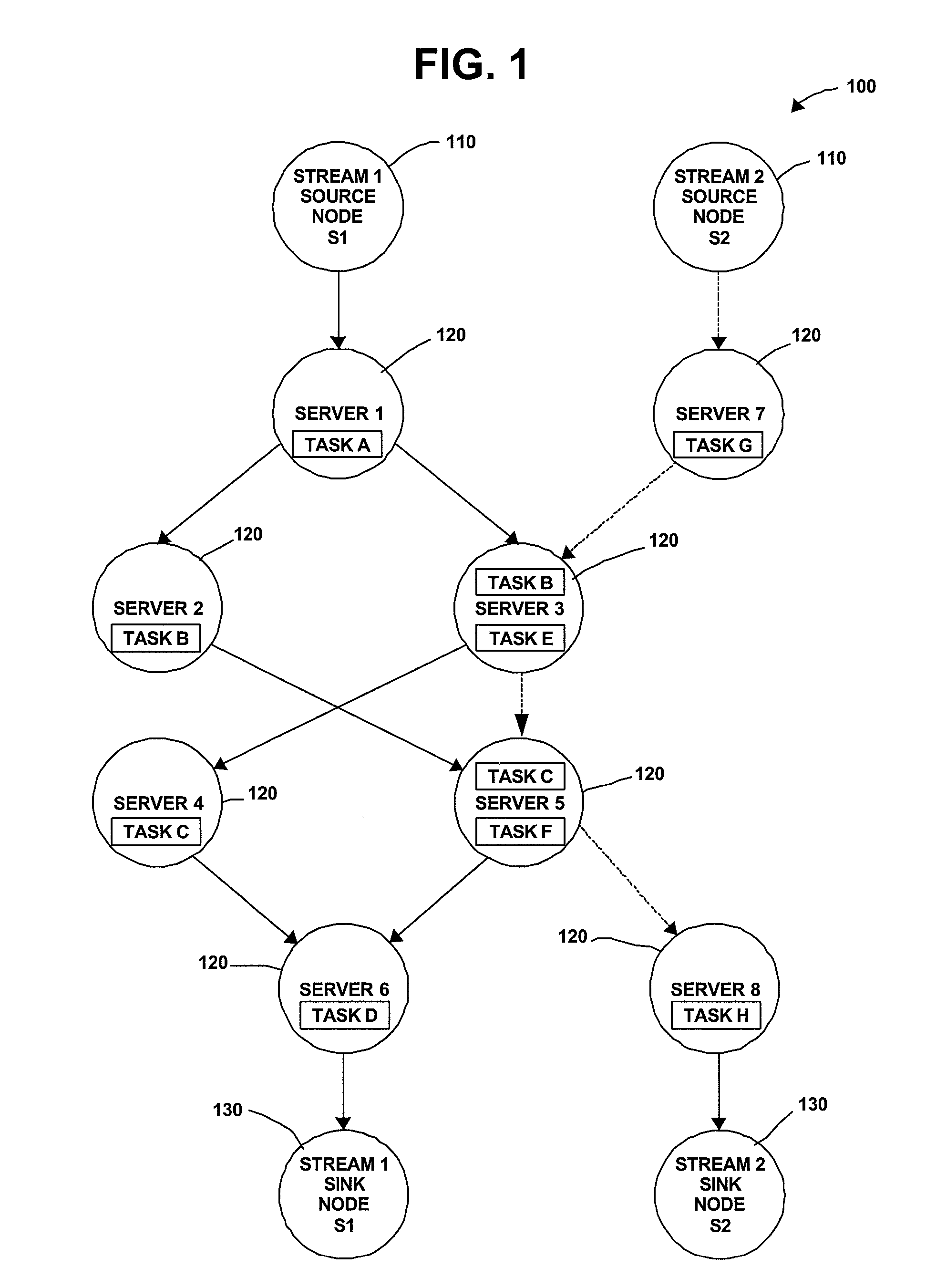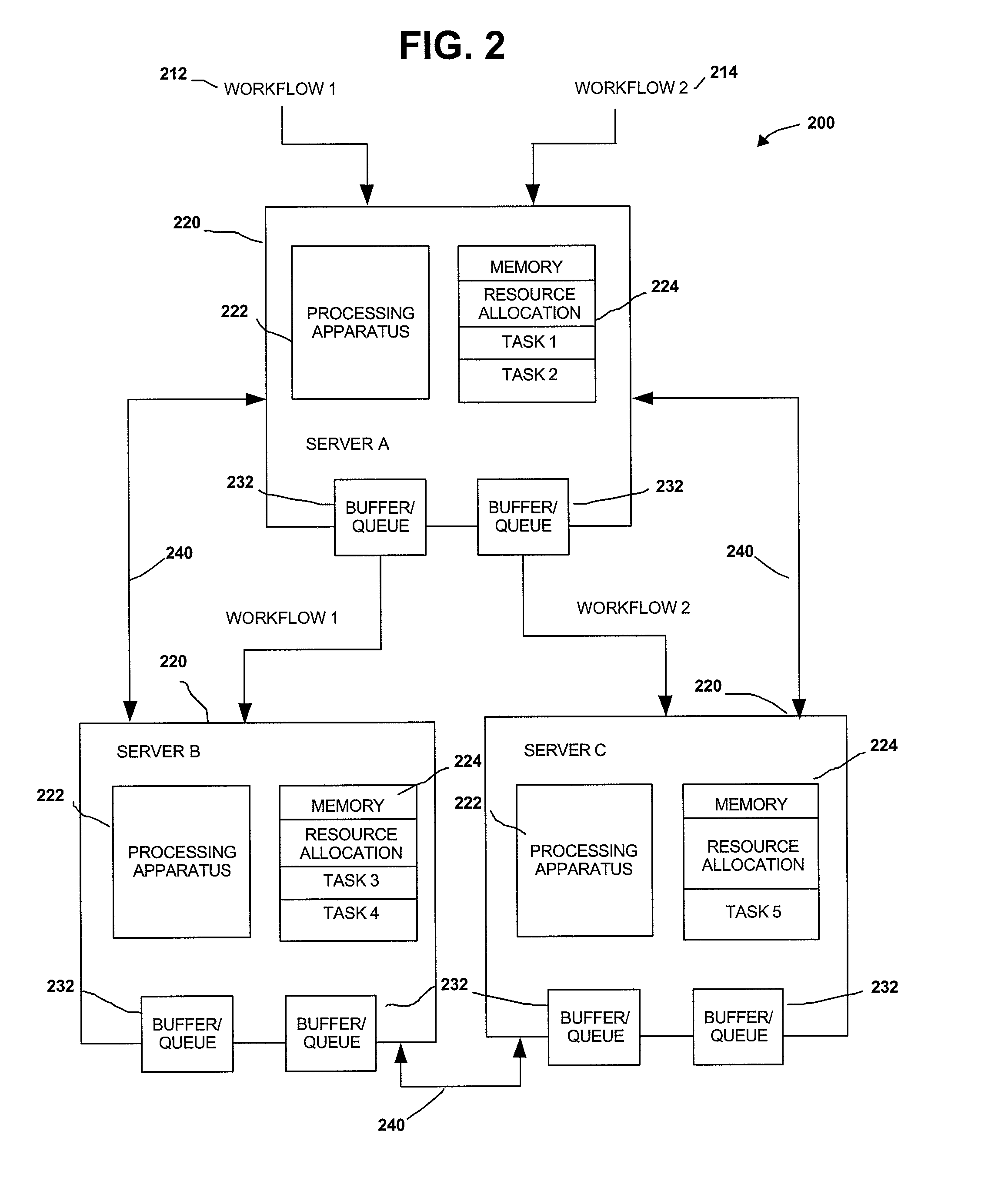Distributed Joint Admission Control And Dynamic Resource Allocation In Stream Processing Networks
a stream processing network and dynamic resource technology, applied in data switching networks, frequency-division multiplexes, instruments, etc., can solve problems such as the substantial degradation of the quality of service (“qos”) experienced by end users, the rate at which data arrives can be unpredictable, and the admission rate can create a load that exceeds the system capacity, so as to improve the speed of convergence and improve the profit margin
- Summary
- Abstract
- Description
- Claims
- Application Information
AI Technical Summary
Problems solved by technology
Method used
Image
Examples
Embodiment Construction
[0029]The invention concerns methods and apparatus that implement efficient mechanisms for joint load shedding and distributed resource control of a generic stream processing system. It is typical in such a system that a large number of data sources are continuously pumping high-volume and possibly bursty data streams into the system. The system consists of a network of cooperating servers, collectively providing processing services for the multiple data streams. It is assumed that all servers have finite computing resources and all communication links have finite available bandwidth. Each stream is required to complete a series of operations on various servers before reaching the corresponding sink. The stream data rate may change after each operation. For example, a filtering operation may shrink the stream size, while a decryption operation may expand the stream size. In one aspect a flow network operating in accordance with the invention differs from a conventional flow network ...
PUM
 Login to View More
Login to View More Abstract
Description
Claims
Application Information
 Login to View More
Login to View More - R&D
- Intellectual Property
- Life Sciences
- Materials
- Tech Scout
- Unparalleled Data Quality
- Higher Quality Content
- 60% Fewer Hallucinations
Browse by: Latest US Patents, China's latest patents, Technical Efficacy Thesaurus, Application Domain, Technology Topic, Popular Technical Reports.
© 2025 PatSnap. All rights reserved.Legal|Privacy policy|Modern Slavery Act Transparency Statement|Sitemap|About US| Contact US: help@patsnap.com



